
Bleak House is a novel by Charles Dickens, first published as a 20-episode serial between 12 March 1852 and 12 September 1853. The novel has many characters and several subplots, and is told partly by the novel's heroine, Esther Summerson, and partly by an omniscient narrator. At the centre of Bleak House is a long-running legal case in the Court of Chancery, Jarndyce and Jarndyce, which comes about because a testator has written several conflicting wills. In a preface to the 1853 first edition, Dickens said there were many actual precedents for his fictional case. One such was probably Thellusson v Woodford, in which a will read in 1797 was contested and not determined until 1859. Though many in the legal profession criticised Dickens's satire as exaggerated, Bleak House helped support a judicial reform movement that culminated in the enactment of legal reform in the 1870s.
Sanditon (1817) is an unfinished novel by the English writer Jane Austen. In January 1817, Austen began work on a new novel she called The Brothers, later titled Sanditon, and completed twelve chapters before stopping work in mid-March 1817, probably because of illness. R.W. Chapman first published a transcription of the original manuscript in 1925 under the name Fragment of a Novel Written by Jane Austen, January-March 1817.
Bodger & Badger is a BBC children's comedy programme written by Andy Cunningham, first broadcast in 1989. It starred Cunningham as handyman Simon Bodger and his four-year-old talking badger companion. The programme was spawned from some appearances the double act made in 1988 as part of the Saturday morning BBC1 children's programme On the Waterfront.

Olive Carey was an American film and television actress, and the mother of actor Harry Carey Jr.
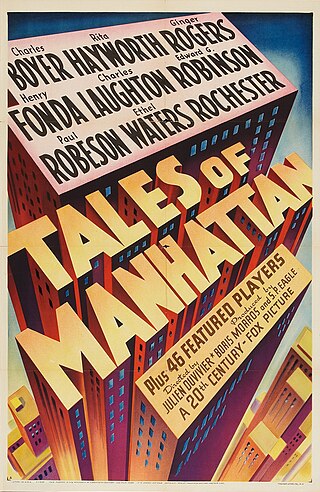
Tales of Manhattan is a 1942 American anthology film directed by Julien Duvivier. Thirteen writers, including Ben Hecht, Alan Campbell, Ferenc Molnár, Samuel Hoffenstein, and Donald Ogden Stewart, worked on the six stories in this film. Based on the Mexican writer Francisco Rojas González's novel, Historia de un frac, which he was not credited for, the stories follow a black formal tailcoat cursed by a cutter as it goes from owner to owner, in five otherwise unconnected stories.

Bleak House is a fifteen-part BBC television drama serial adaptation of the Charles Dickens novel of the same name, which was originally published in 1852–53 as itself a print serialisation over 20 months. Produced with an all-star cast, the serial was shown on BBC One from 27 October to 16 December 2005, and drew much critical and popular praise. It has been reported that the total cost of the production was in the region of £8 million.

Manservant and Maidservant is a 1947 novel by Ivy Compton-Burnett. It was published in the United States with the title Bullivant and the Lambs.

Three Blind Mice and Other Stories is a collection of short stories written by Agatha Christie, first published in the US by Dodd, Mead and Company in 1950. The first edition retailed at $2.50.
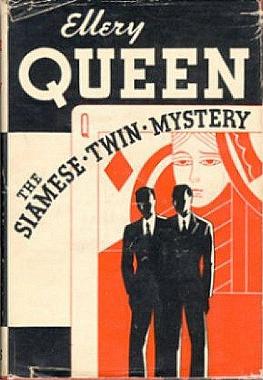
The Siamese Twin Mystery is an English language American novel written in 1933 by Ellery Queen. It is the seventh of the Ellery Queen mysteries.
The Cowboy and the Lady is a 1938 American Western romantic comedy film directed by H.C. Potter, and starring Gary Cooper and Merle Oberon. Written by S.N. Behrman and Sonya Levien, based on a story by Frank R. Adams and veteran film director Leo McCarey, the film is about a beautiful socialite masquerading as a maid who becomes involved with an unpretentious, plain-spoken cowboy who is unaware of her true identity. The Cowboy and the Lady won an Academy Award for Sound Recording, and was nominated for Original Score and Original Song.

My Sister Jodie is a 2008 children's novel by English author Jacqueline Wilson.

Julia Magruder was an American novelist. Most of her novels are love stories in which the heroine must face obstacles in pursuit of her goal to find true love. Several of her novels were serialized in the Ladies' Home Journal. A week before her death she received the award from the Académie Française for which she had been nominated a year earlier.

The Charm School is a lost 1921 American silent comedy film starring Wallace Reid. Produced by Famous Players–Lasky and distributed through Paramount Pictures this James Cruze directed film was based on a 1920 Broadway stage play and novel by Alice Duer Miller that starred veteran actress Minnie Dupree. It is currently a lost film. It was filmed on the campus of Pomona College in Claremont, California.
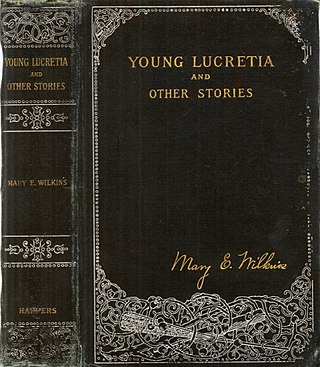
Young Lucretia and Other Stories is a collection of thirteen short stories by Mary Eleanor Wilkins Freeman. The stories were originally published individually in literary magazines such as Harper's Young People and St. Nicholas Magazine between 1887 and 1892. They were later collected and reprinted by Harper & Brothers in 1892. These stories primarily feature children who learn moral lessons after misbehaving.

Caroline M. Sawyer was a 19th-century American poet, writer, and editor. Her writings ranged through a wide variety of themes. Born in 1812, in Massachusetts, she began composing verse at an early age, but published little till after her marriage. Thereafter, she wrote much for various reviews and other miscellanies, besides several volumes of tales, sketches, and essays. She also made numerous translations from German literature, in prose and verse, in which she evinced an appreciation of the original. Sawyer's poems were numerous, sufficient for several volumes, though they were not published as a collection.
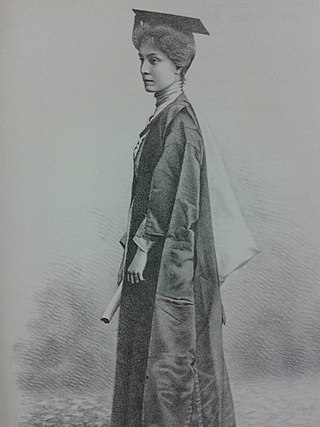
Florence Hope Dissent-Barnes was an Anglo-Indian medical practitioner and surgeon. Dissent was among the first female Indian doctors to practice medicine.
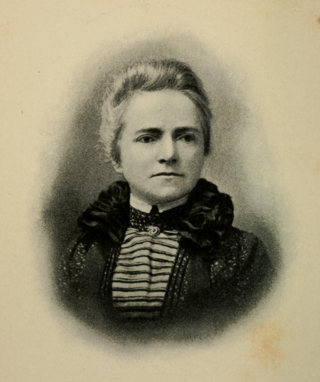
Mary Porter Gamewell was an American missionary, teacher, speaker, and writer who founded a school for girls in Beijing, China. She was the first missionary sent out by the Western Branch of the Woman's Foreign Missionary Society, and the first missionary that the organization sent to China. At that time, the Woman's Foreign Missionary Society of the Methodist Episcopal Church had but five missionaries in the world, and she was one of them. She traveled from Davenport, Iowa to Beijing, China in 1871 and started a school for girls, the institution opening with only one girl. It grew very slowly, more so because it was the first school in China to unbind the feet of the girl, an act that engendered great prejudice. By the time of the Boxer Rebellion, the school for girls, which Porter referred to as the "Davenport school", had 150 pupils enrolled.














